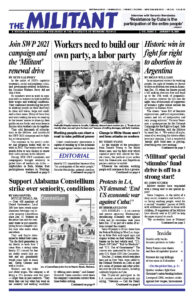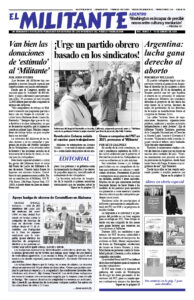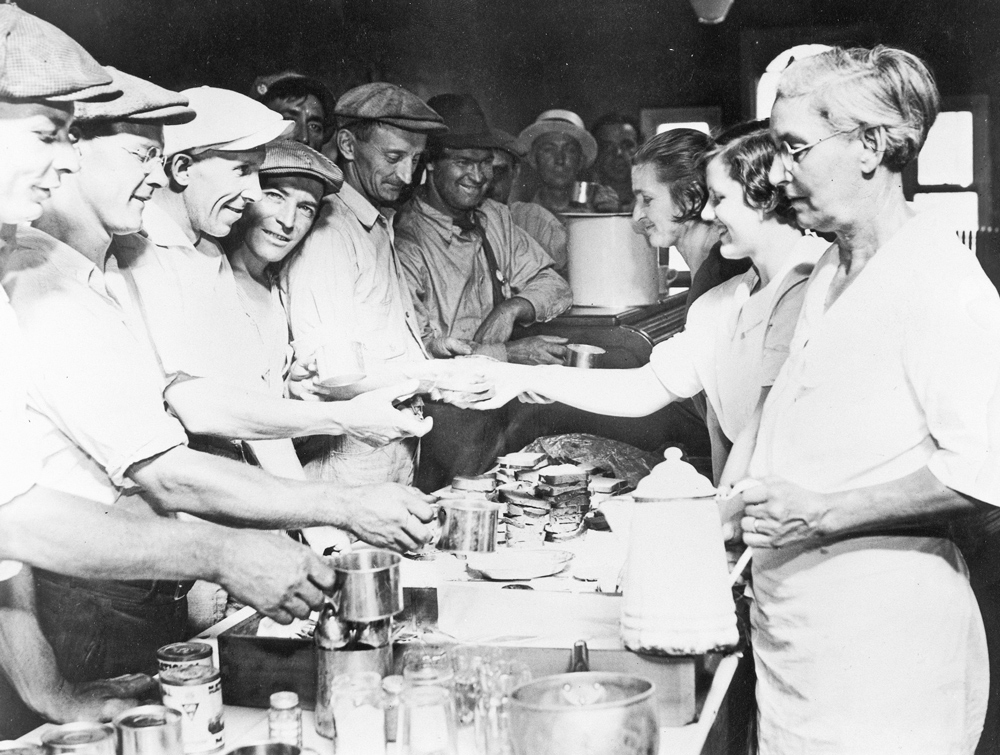Teamster Rebellion by Farrell Dobbs, a Pathfinder Book of the Month in Spanish for January, is the story of the 1934 Teamster organizing drive in Minneapolis. Through hard-fought strikes, rank-and-file workers defeated strikebreaking efforts by the trucking bosses and the employers’ “Citizens Alliance,” aided by city, state and federal governments. Dobbs, who emerged as part of the class-struggle leadership and became a leader of the Socialist Workers Party, describes how a fighting industrial union movement was built there, helping pave the way for the rise of the CIO. Below is an excerpt from chapter 6, “Organizing the Strike.” Copyright © 1972 by Pathfinder Press. Reprinted by permission.
BY FARRELL DOBBS
Local 574’s combat leaders, acting through the organizing committee, had no illusions about the gravity of the impending conflict. They were fully aware that the bosses would try to smash the strike. If the union was to win, a tremendous battle would be necessary. Under the pressures of such a fierce struggle, maneuvers detrimental to the union could be expected from the Labor Board and from Governor Olson. We could also anticipate weakness on the part of the city’s AFL officialdom, which was bound to be squeamish about physical combat and prone to urge the workers to rely completely on Olson. In the last analysis the outcome of the strike would hinge on the fighting capacity of the union ranks.
Seeking to impart this understanding to the membership, the combat leaders prepared to teach the workers the ins and outs of fighting for their rights. This circumstance made the strike quite exceptional. Fighting spirit in the ranks was usually restrained and dampened by the AFL officials, while in this case a militant struggle was being organized by what had become the key section of the top union leadership.
Seldom anywhere, in fact, had there been such a well-prepared strike. When the sun rose on May 16, 1934, the headquarters at 1900 Chicago Avenue was a beehive of activity. Union carpenters and plumbers were installing gas stoves, sinks, and serving counters in the commissary. The Cooks and Waiters Union sent experts on mass cooking and serving to help organize things and train the volunteer help. Working in two twelve-hour shifts, over 100 volunteers served 4,000 to 5,000 people daily. Sandwiches and coffee were always available and a hot meal was served whenever the commissary’s resources and the circumstances of the strike permitted. In addition, arrangements were made so that key personnel could sleep in or near the headquarters for the duration.
Committees were set up to promote material aid. They solicited friendly grocers for staples to be used in the commissary and to help out the needy families of strikers. Similar donations were also received from sympathetic farmers. The committees fought city hall to get public relief for union members and the facts of life were explained to landlords who pressed the workers for rent payments. Money donations from other unions helped to stock the commissary, as well as to buy gasoline for the cruising picket squads and medical supplies for the union’s emergency hospital. …
Three trained nurses headed up a larger volunteer staff that provided such efficient care that, despite the many open wounds treated, not one bad infection developed. The hospital was supervised by Mrs. Vera McCormack, a skilled technician whom everyone fondly called “Mac.” To avoid air pollution in the hospital and commissary, picket cars were pushed into and out of the headquarters.
About a score of skilled auto mechanics had turned to, bringing their tools with them, to keep the strikers’ cars in working order. The former tool crib and supply room in the big garage was turned into a general office where volunteers did the typing and mimeographing and signed up new members pouring into the union. An organized guard was maintained in and around the headquarters to watch for police intrusions, prevent drinking, cool down temper flareups, and keep order. Except at critical times, when everyone worked to the point of exhaustion, the various assignments were rotated.
Special attention was given to keeping the workers informed about the strike’s progress and helping them to answer lies peddled by the bosses. Each evening a general assembly was held at the headquarters for this purpose. Reports were made by the strike leaders, guest speakers were invited from other unions to help morale through expressions of solidarity, and some form of entertainment usually followed. A loudspeaker system was installed so that packed meetings could hear what was said, as could the overflow crowds outside, which often numbered two to three thousand.
There were also regular meetings of the strike committee of seventy-five, which had been elected by the union membership. This body … made the general decisions about strike policy. …
Assembling the mass forces for such extensive picketing proved to be no problem at all. As soon as the strike was called, new members poured into Local 574 from all sections of the trucking industry. In no time at all the union almost doubled its mid-April strength, reaching a figure of nearly 6,000. The union’s approach to the unemployed workers brought spectacular results. Hundreds upon hundreds of jobless poured into the strike headquarters, volunteering their services; and they fought like tigers in the battles that followed. Unorganized workers from other industries came forward. Together with women and men from other unions, they came to the strike headquarters at the end of their day’s work, ready to help in whatever way they could. Deep in the night they would finally stretch out wherever they found a place to get a little sleep before returning to their jobs. A significant number of college students pitched in to help the union. All in all, pickets were on hand by the thousands. …
As matters now stood, the union had its strategy worked out, the necessary forces had been mobilized and picketing operations were planned with military precision. The next step was to begin the big push against the employers. Trucking operations had to remain tied up, despite all attempts to use scabs working under police protection, until the employers agreed to deal with the union.


